Foresters
General practice of Board of Foresters
- Any person who offers to perform or who performs for another whether for profit or not, any of the following services shall be deemed to be practicing the forestry profession, to wit: the scientific conservation and management of forests for the continuous and judicious utilization of forests and forest products; including services in the form of forestry consultation, investigation, planning, preparation, and implementation of management plans for forest and national park areas and the determination of the suitability of public forest land for pasture or agricultural land; logging, forest reconnaissance and timber estimate; scaling and grading of logs and lumber; identification of woods and other forestry products; administration, management and supervision of forest plantation and tree farm leases within public forests; protection and conservation of game and wildlife; preparation and implementation of reforestation and afforestation plans; supervision of any forestry activity requiring the application of forestry principles; and such other activities as related to forest protection, silviculture, and maintenance or restoration of necessary ecological balance. Persons who have had at least three years practical experience in the field or who have completed at least two years of the Forestry Course may be employed to perform the foregoing services under the supervision of a forester who shall be responsible for the satisfactory completion of their work.
- The term “forester” as used in this Act is a natural person duly registered with the Board of Examiners1 as a forester who (1) is duly qualified and exempt from taking the board examination; or (2) who passed the Forestry Board Examination.
The forestry profession is considered one of the oldest professions in the Philippines. It dates back to an era when the Spanish government organized in the Philippines a forestry service known as the “Inspeccion General de Montes” under the “Direccion General de Administracion Civil” with personnel from the forest service in Spain.
During the American occupation, the Forestry Bureau was created through General Order No. 50. When the Philippines gained independence in 1946, the first Filipino forester, the Director of Forestry Service during the American period was re-appointed to his position. At that time, the interest to professionalize forestry in the Philippines gained momentum after it was halted during the Japanese occupation.
In the 1960s, the Society of Filipino Foresters (SFF), which was organized in 1948, made strong representation in Congress for the passage of the Forestry Modernization Bill. On June 19, 1971, their efforts paid off when President Marcos signed into law Republic Act No. 6239 or “The Forestry Profession Law,” creating the Board of Examiners for Foresters. In the ensuing year, the Code of Ethics for Foresters was formulated and approved. The Board, composed of Jose Viado as Chairman with Nicolas P. Lansingan and Faustino C. Francia as Members, conducted the first foresters licensure examinations on the same year.
♦ REPUBLIC ACT NO. 10690
An Act regulating the practice of Forestry in the Philippines and appropriating funds therefor, repealing for the purpose Republic Act Numbered Six Thousand Two Hundred Thirty-Nine (R.A. No. 6239), known as "The Forestry Profession Law"
Download/open the full version of Republic Act 10690.
♦ REPUBLIC ACT NO. 6239
An Act to regulate the practice of the Forestry Profession in the Philippines
Be it enacted by the Senate and House of Representatives of the Philippines in Congress assembled:
Title of Act. - This Act shall be known as “The Forestry Profession Law.”
Download/open the full version of Republic Act 6239.
Society of Filipino Foresters (SFF)
Room 6443, Asian Development Bank
No. 6 ADB Avenue
Mandaluyong City
Tel No. 632-67-15
Date of Accreditation : July 15, 1991
Website: https://sffi.org.ph/
On February 14, 1948, the Society of Filipino Foresters was formally organized in a meeting of 102 government and private foresters led by Forester Placido Dacanay who served as Acting President and Forester Juan Daprosa as Acting Secretary. Forester Dacanay was eventually elected as President.
On August 26, 1948, the Society was incorporated with the SEC under Registration No. 3860. It held its first General Annual Meeting on February 9, 1949 – the first largest ever assemblage of foresters in the Philippines.
Accredited as a professional organization by the PRC on July 15, 1991, the SFF is guided by the following objectives:
- to promote the science, standards, and practice of forestry in the Philippines;
- to advance, represent and protect the interest and standards of the profession of forestry;
- to assist in the full development, wise use and conservation of all forest lands, public or private, so as to assure our country a continuous and adequate supply of forest products and forest influences and other values therefrom;
- to provide a medium for the exchange of professional thought by means of a publication, and
- in general, to do everything and perform all other acts which are directly or indirectly, necessary or incidental to, or in furtherance of the purposes of the Society.
Qualification of Board Members
A member of the Board shall, at the time of his appointment, possess the following qualifications:
- Be a natural-born citizen of the Philippines, of good moral character;
- Be at least a holder of the degree of Bachelor of Science in Forestry or its equivalent degree in Forestry;
- Have been engaged in the practice of forestry for at least ten years; and
- Not be connected directly or indirectly, with any educational institution offering courses in forestry. No member of the Board may accept employment or become connected with any such educational institution for a period of six months after his term.


